Camanini is Camanini. The one and only. The least that can happen when the big boy from Gardone Riviera speaks, is that you will freshen up your knowledge of Aristoteles and the Italian Constitution, and then view a series of frames from Ecce bombo picturing a weird-looking Nanni Moretti only to dive into the imagery of Macondo. All this, curiously, without Riccardo Camanini ever puffing his chest. Because virtue and knowledge for the gentle cook from Lido 84 are tools, an essential viaticum to reach the goal of a tasty yet sensible cuisine. A cuisine that goes beyond the necessity of loving oneself, so closely connected to happiness, by doing a good job, and instead completes the duty of each citizen of “doing, according to one's possibilities and choices, an activity that can contribute to the material or spiritual progress of society”. Article four of the magna carta on which the Italian law system is based, as quoted in the sixteenth edition of Identità Milano.
Camanini's lesson thus started with an evocation. That of an original feeling for a work that started from a childhood memory, that is to say the voice of the roaming sellers arriving in the village. «I was around four, I think: the second-hand dealer, the man who fixed umbrellas, would announce their arrival with their litanies». Our muezzin, each one with their special
ecce bombooooo, indeed.
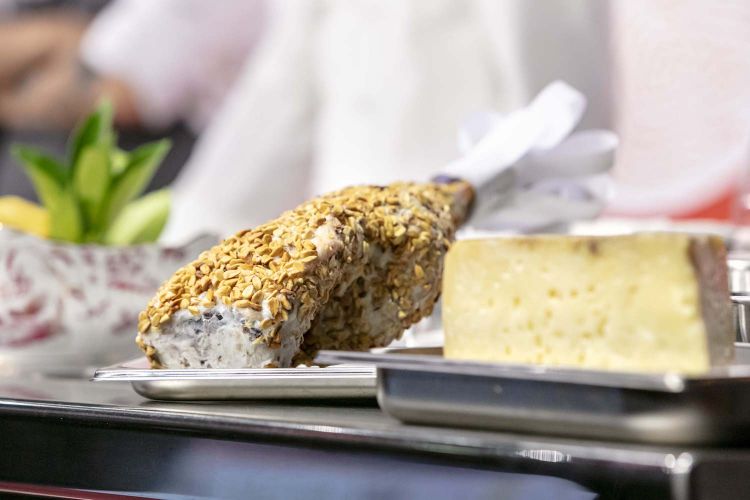
Making one of the dishes presented by Camanini: leg of ram, covered in suet, lard and toasted faggiole
The forced break imposed by the pandemic and its diluted time have allowed the chef who trained with Marchesi to go through his memories and think over the meaning of his work. And to direct his creativity in a different direction, a creativity that is all but sleepy, unpredictable. «I have always been naturally interested in the lake. The obligation not to move too far for the first time made me look on the other side, and in a microcosm of nine villages I discovered things that I have always had around me, small, so close that they've always escaped my attention». A change of perspective that created six new dishes. Showing «how much the imagination can be fertile in times of crisis». Here is what.
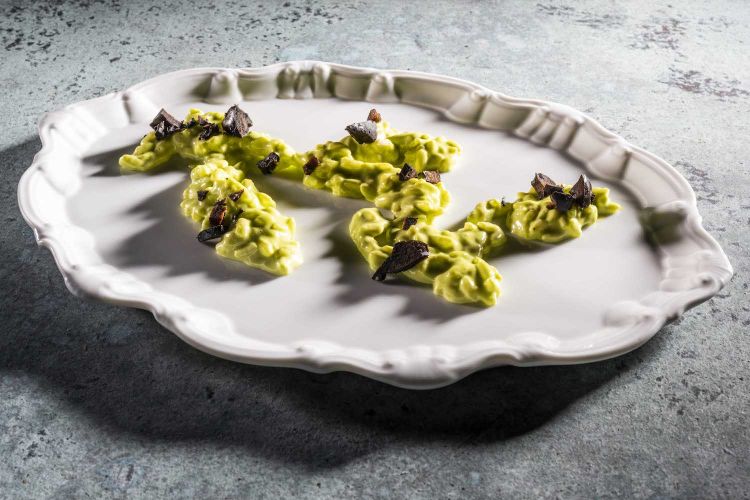
Rice, caprifico (wild fig) and macerated walnut husk
«In Gardone we're surrounded by caprifico trees, which is a wild fig whose fruits are not edible. What surprised me were its leaves, and the white milk they enclose, already mentioned by
Aristoteles as a possible whey for cheese. They have a very intense scent. We used them to make oil with caprifico leaves, the base of a mayonnaise we use in our risotto. The rice is always al dente so that the vegetal part can fully express itself. The last step is adding the walnut husk macerated in sugar and alcohol for various months. The tannic component is in the rice. The alcoholic one is in the walnut husk».
Pasta e fagioli
Beans from Valvestino would make
Aimo Moroni go crazy, being the explorer of raw materials that grow in Italian provinces turned into fine food ingredients. «Their colour is surprising. There are 30 families making 400 kg each year. It's buttery, it tastes of chestnuts. I used a technique I had experimented, using the water in which I soaked the legumes, you need five litres per 100 grams. In this case, the water used for the soaking has the colour of wine. We mix inside some durum wheat snails. We blend the beans. It's a blended pasta e fagioli, with a strong, unusual colour, and to finish we add trout roe».
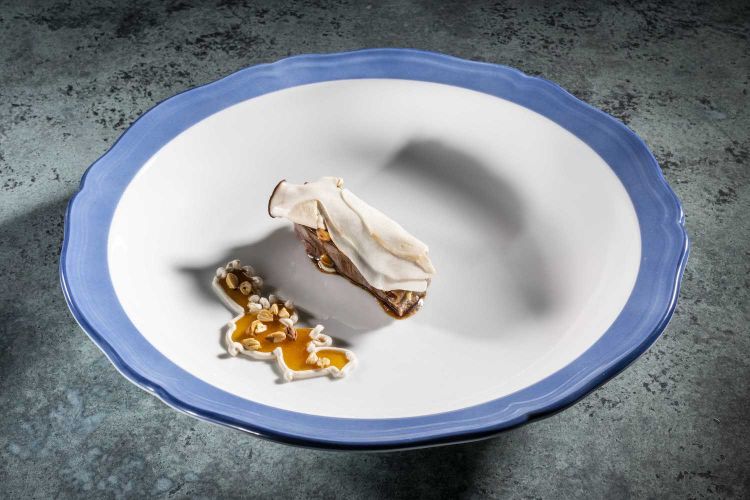
Roasted ram, beech, lamb sauce
Caprifichi and beeches. A short walk from Gardone, immobile in front of the daily skyline, yet never seen before. «The fruits of beeches are not very well known. Inside they have a pepita and a fruit that resembles a pine nut. A very green nut. As I was walking in a forest of beeches, and the soil was crunching under my feet, I saw a herd of some twenty ram at the bottom of a steep mountain. They were hanging onto the slopes. I talked about it with a friend, who is also a supplier, and he told me that in the culture of the Dolomiti Lucane when the ram fights with the other male to dominate the stable, the losing dueller faces a twice sad destiny. It is castrated and then killed. This dish is born from that vision and these connections. The meat is aged for two months, and during the lasts two weeks it is covered with suet, lard and toasted beeches. Thanks to this and to a very slow cooking, the meat is extremely soft. We add a sauce of lamb brain fried with oil of beeches and shallot, with a dash of marsala. And also an apricot jam delicately aromatised with chilli pepper. And finally the leg, covered with beeches and finished with porcini».
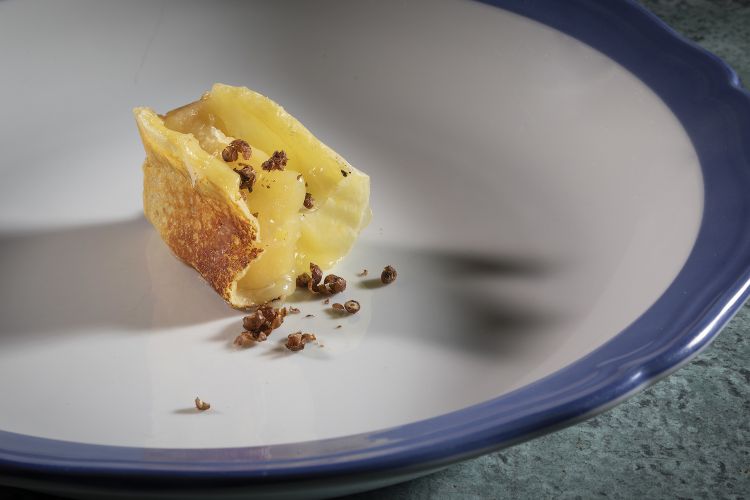
Grilled Tombea, karimunda pepper, bitter drink
«
Tombea is a cheese from Valvestino similar to
magasa, the poor cousin of
bàgoss. We grilled it. Toasted and paired it with karimunda pepper, an extraordinary pepper with a slightly lactic flavour, marinated with a bitter drink made by
Gianluca Gorini and
Baldo Baldinini, showing how when professionals interact this leads to new ideas. The cooking is finished with a large croute, while the inner capsule is soft. A lost dish, which can only be found in osterie, dressed with an alcoholic note of pepper». And an incredible scent.
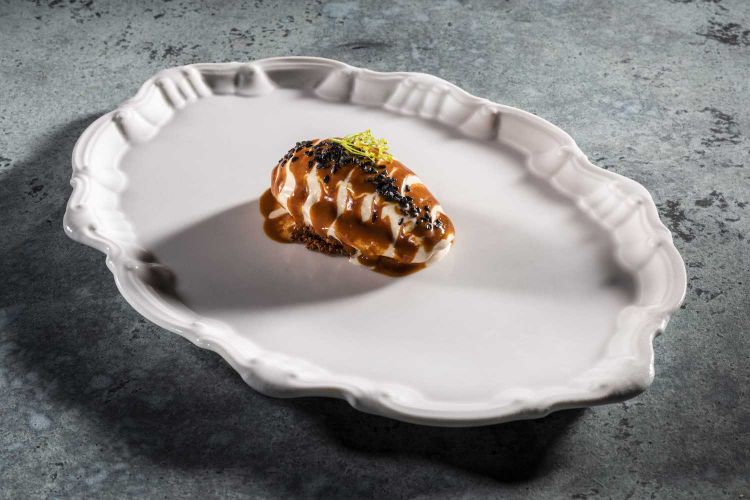
Dates, fennel, sea urchins and nigella
«We went into the desert one day, it was our only trip, in Dubai. I preferred the desert to the buildings. We found some dates which are not as sweet, they taste like chestnuts, and a bit like liquorice too. It's from here that comes this ice cream aromatised with dates and fennel, brought in another dimension with sea urchins from Galicia and a touch of nigella, a fruity Asian cumin. And to finish, a fennel flower».
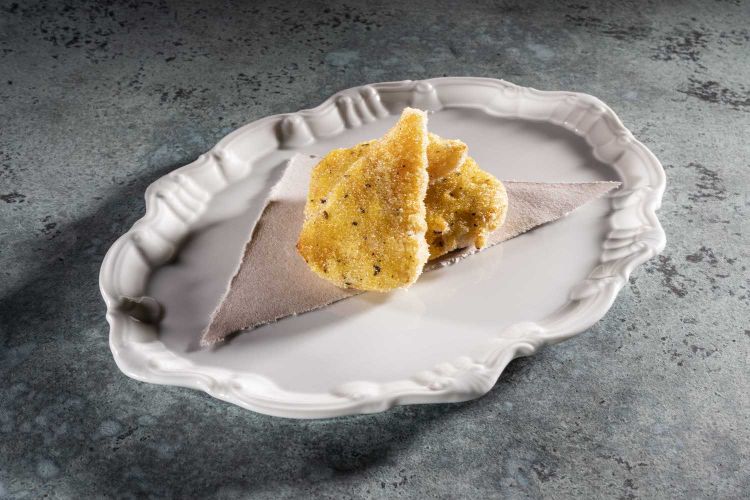
Lemon from Toscolano Maderno candied three times
«We could not leave without paying a tribute to the lemons of our region. But to do so we drew from the experience of
Corrado Assenza. We candied the lemons three times, and at the end of the third time, which lasted two months, we marinated them in calamansi vinegar and acacia honey, and then rolled them in a batter aromatised with Timut pepper and sprinkled them with alkermes, then we rolled them in sugar and Timut pepper. And served them».
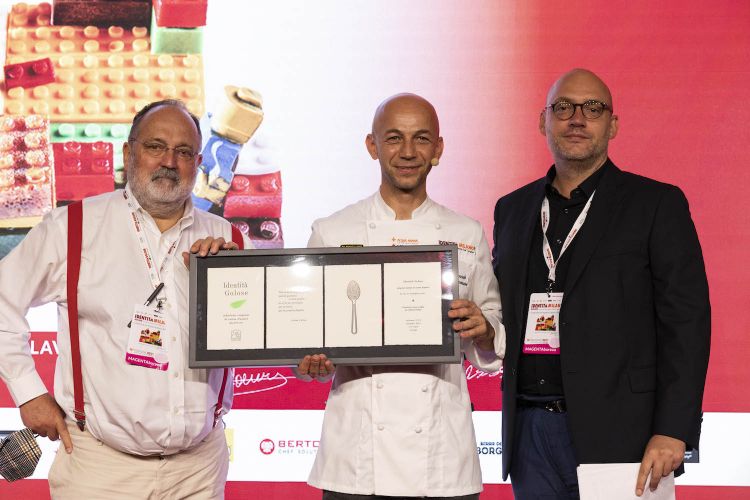
Camanini with Paolo Marchi and Carlo Passera, who presented the lesson
Translated into English by
Slawka G. Scarso